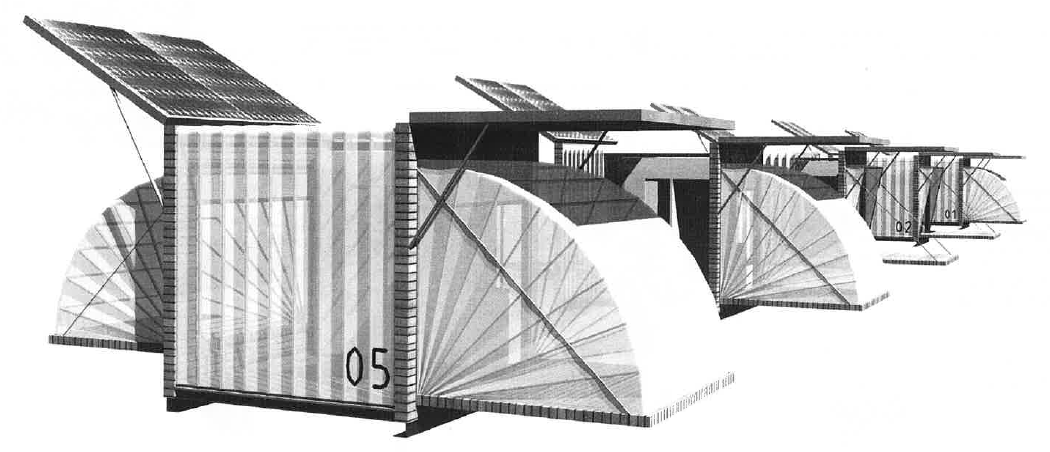This international competition was launched by the International Union of Architects for the 2006-2008 period on the theme of ‘Renewable Energy Sources and Bioclimatic Architecture for Shells’, to shelter people affected by natural disasters.
This was a one-stage international ideas competition.
The competition invited architects to bring together their ideas for the creation of new housing spaces in extreme and extraordinary conditions such as natural disasters, making possible a rapid and efficient settlement for affected people that could be adapted to uncommon geographic, topographic, ecological, social or political contexts.
Theme and objectives
Over the past two decades, an average of more than 200 million people have been affected every year by disasters such as earthquakes, floods, landslides, droughts, wildfires, tropical cyclones and associated storm surges, tsunamis and volcanic eruptions. These disasters cause loss of human life, the destruction of economic and social infrastructure, and also serious damage to already fragile ecosystems. In such conditions, developing innovative sustainable architecture and pre-fabrication approaches for temporary shelters for people affected by natural disasters is a major modern challenge for the international community.
The goal of this competition was to help humanity by designing viable housing solutions to shelter affected populations and promote a vast urban and social restructuring in the short and medium terms.
The aim of this competition was also to raise awareness of the potential consequences of climate change and natural disasters, as well as of the potential of bioclimatic planning and architecture to offer viable shelter solutions, quick construction, efficient maintenance and environmental sustainability.
The industry must demonstrate environmental and energy efficiency, influencing multilateral environmental agreements and encouraging “green architecture”, not only in high profile buildings but also and especially in cheaper constructions.
Eligibility
This competition was open to all licensed architects, groups of architects or teams of multidisciplinary professionals with a licensed architect as team leader, irrespective of nationality or country of residence.
